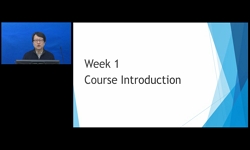이 연구의 목적은 부정 표현과 호응하는 부사의 어휘별 사용 양상을 살피고, 이를 외국인을 위한 한국어 교육 등에 어떻게 활용할 것인지를 살피는 데에 있다. 코퍼스에 나타난 부정 표현 호...
http://chineseinput.net/에서 pinyin(병음)방식으로 중국어를 변환할 수 있습니다.
변환된 중국어를 복사하여 사용하시면 됩니다.
- 中文 을 입력하시려면 zhongwen을 입력하시고 space를누르시면됩니다.
- 北京 을 입력하시려면 beijing을 입력하시고 space를 누르시면 됩니다.

일반논문 : 부정 표현과 호응하는 부사의 사용 양상과 한국어 교육 = On the use of the adverbs co-occurred with the negative expressions and its application to the Korean Language Education
한글로보기https://www.riss.kr/link?id=A75640444
- 저자
- 발행기관
- 학술지명
- 권호사항
-
발행연도
2007
-
작성언어
-
- 주제어
-
KDC
810.5
-
등재정보
KCI등재
-
자료형태
학술저널
- 발행기관 URL
-
수록면
187-214(28쪽)
- DOI식별코드
- 제공처
-
0
상세조회 -
0
다운로드
부가정보
국문 초록 (Abstract)
이 연구의 목적은 부정 표현과 호응하는 부사의 어휘별 사용 양상을 살피고, 이를 외국인을 위한 한국어 교육 등에 어떻게 활용할 것인지를 살피는 데에 있다. 코퍼스에 나타난 부정 표현 호응 부사를 빈도순으로 정리해 보이면 다음과 같다. 전혀-결코-별로-그리-도대체-도저히-절대-그다지-절대로-도무지-채-미처-좀처럼-여간-영-비단-차마-전연-통-구태여-이루-도통-과히-좀체-별반-일절-도시-딱히-당최-이만저만-결단코-별달리-지지리-별양-바이 위와 같은 부사들은 그 결합하는 부정 표현도 어휘별로 다른 양상을 보여준다. 코퍼스에 함께 나타나는 부정 표현도 다르고 결합하는 부정 표현의 빈도도 차이를 보인다. 한편, 부정 표현 호응 부사의 사용 빈도와 결합 양상을 한국어 교육에서 어떻게 활용할 것인지를 검토하였다. 부정 표현 호응 부사의 빈도 정보는 한국어 교육 과정에서 단계별로 구분하여 가르칠 필요가 있다고 보고, 구체적인 단계화 방안을 예시하였다. 또한, 부사별로 결합하는 부정 표현도 다르게 나타나므로 한국어 교육에서 그런 점들을 정확하게 가르칠 필요가 있다. 나아가 빈도가 높은 것을 먼저 가르치고 낮은 것은 나중에 교육하는 것이 바람직하다고 보았다.
다국어 초록 (Multilingual Abstract)
The purpose of this study is to investigate on the adverbs co-occurred with the negative expressions in the corpus. It is necessary for some adverbs to co-occur with the negative expression in Korean. These adverbs have different combination constrain...
The purpose of this study is to investigate on the adverbs co-occurred with the negative expressions in the corpus. It is necessary for some adverbs to co-occur with the negative expression in Korean. These adverbs have different combination constraints with the negative expressions. Firstly, I analyzed the frequency in use of the adverb co-occurred with the negative expressions in the corpus. Adverbs such as ``전혀, 결코, 별로`` are appeared the most frequently. Otherwise these adverbs have different combinations with the negative expressions. I analyzed the combination constraints of the adverb and the negative expression concretely, based on the language corpus. And I will also test the possibility of the application of my findings to the Korean Language Education. I proposed that we need to teach the korean adverbs co-occurred with the negative expressions, in the order of frequency in use. My proposal runs as follows. step 1: 전혀, 결코, 별로, 그리, (frequency count - 1000 over) step 2: 도대체, 도저히, 절대, 그다지, 절대로 (frequency count - 500 up to 1000) step 3: 도무지, 채, 미처, 좀처럼, 여간, 영, 비단, 차마, 전연, 통, 구태여 (frequency count - 100 up to 500) step 4: 이루, 도통, 과히, 좀체, 별반, 일절, 도시, 딱히, 당최, 이만저만, 결단코, 별달리, 지지리, 별양, 바이 (frequency count - 100 downward). I expect that the results of this study might be applied to the Korean Language Education for foreigners, the description of Korean dictionary, and NLP(natural language process) etc.
동일학술지(권/호) 다른 논문
-
기획논문 : 한민족문화의 외연 ; 한국과 몽골의 물 상징성에 대한 비교 고찰 -구비문학과 민속을 중심으로-
- 한민족문화학회
- 이안나 ( An Na Lee )
- 2007
- KCI등재
-
일반논문 : 한국어의 불평등한 언어문화에 관한 연구 -방송 언어를 대상으로-
- 한민족문화학회
- 김형배 ( Hyeong Bae Kim )
- 2007
- KCI등재
-
기획논문 : 한민족문화의 외연 ; 한국과 터키 소설 속의 신여성, 근대성, 민족성
- 한민족문화학회
- 오은경 ( Eun Kyung Oh )
- 2007
- KCI등재
-
기획논문 : 한민족문화의 외연 ; 러시아 유이민 소설 연구
- 한민족문화학회
- 표언복 ( An Bok Pyo )
- 2007
- KCI등재




 KCI
KCI KISS
KISS






